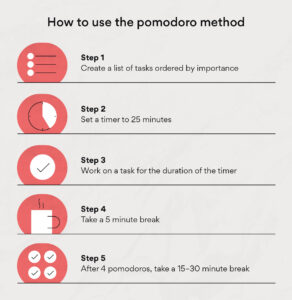Time – we all want more of it, and yet we often waste so much of it. Time management is a critical part of our journey to success. So what can we do to maximise what we get out of the time we have?
Prioritising is Key
What do you want or need to achieve, and when by? Setting clear, defined goals will help you to hone in on what’s important. Ensure you have a wider business plan that everyone in your team is aware of and has access to, in order to stay on track to meet your targets.
Think about prioritising your most valuable customers and clients by grading them A-D. The A customers are the ones bringing the most value to your business, while the D customers often take up your time with problems, while providing little loyalty or investment. With these customers, you could benefit – and save time – by helping them to leave. Learn more about how Grading Customers can be effective via my short video here.
Shut Out Distractions to Allow Yourself to Focus
While some distractions merely curb our attention onto another task, others often lead to procrastination and time-wasting. Tools such as in-built screen time limits on your phone are there to restrict your use of certain apps, helping you to avoid incessant social media scrolling. Other time management apps such as ToDoist send alerts to remind you of your objectives for the day, within their assigned time-bound deadlines.
For those working from home, or hybrid working, that environment comes with its own set of distractions and challenges. The Pomodoro Technique suggests setting a timer for 25 minutes, and spending that time focused solely on one task without interruptions. Segmenting your day with regular short breaks is designed to sustain attention and productivity where you might otherwise find there is a lull.

Having the courage to say no to things that detract from your main focus is essential! In business, we often feel we have to say yes, as it may lead to another opportunity. But more importantly than spending time simply seeking ‘more’ opportunities, make sure you are competently seeking opportunities that align with the long-term goals of your business.
Utilise Your Calendar to Set Boundaries
Your calendar is your organisation bible. But it has to work for you in order to work efficiently. Start by plotting in all recurring tasks and activities, which will help you to plan out your time into a rational routine. As part of this, build a realistic working day that operates best for you. Be sure to include breaks and time-buffers, which are practical and necessary, as well as definitive start and end-points to your day to allow for downtime. This way, you set clear boundaries to those you liaise with as to when you are available to be contacted.
Make your calendar accessible by using those operating through the cloud, such as GoogleCal. This will ensure your schedule is available across devices, which is especially useful for hybrid workers and teams that may not always use the same hardware to work from. If you are a visual person, make use of colour-coding to ensure it can be interpreted easily at a glance. This will help to emphasise important meetings, tasks or deadlines and keep them at the forefront of your mind.
Within these regular tasks, are there things that are less suited to your skill set that could be delegated? Watch our video on the Skill/Fun matrix to see how you can focus your time on the tasks that best exercise your expertise.
Personalise Your Approach
Consider what is most important to you. Is it having more time for your personal life? Can you use the time you have more efficiently? Taking steps to improve your approach will catalyse positive change within your business, whether it is through working with a business coach to guide you and hold you accountable, or revisiting your business plan to ensure it reflects your goals.
If you’re looking for further advice and support in mapping the success of your business, please don’t hesitate to contact me at tomhosking@actioncoach.co.uk.







